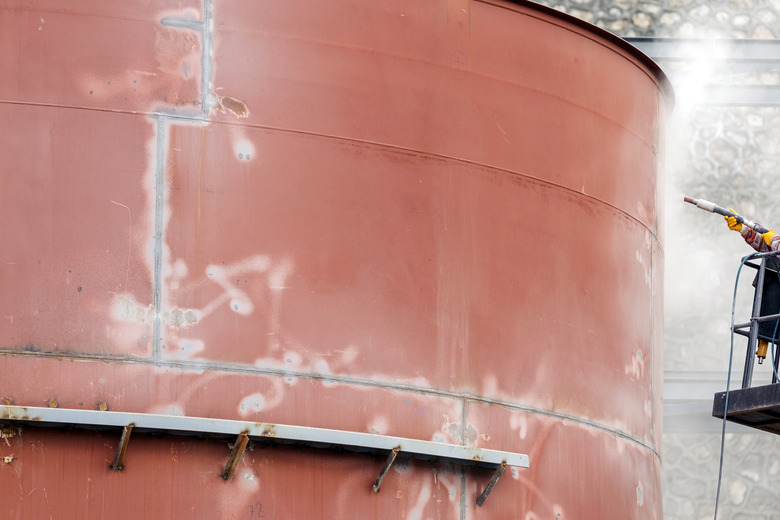What Is Glass Bead Blasting?
Blasting is a common procedure use to treat the surfaces of many different kinds of objects, and involves propelling (or "blasting") grit at a surface to change its texture or shape. There are several different types of blasting, and they can be compared most easily to sandpaper. Glass blasting is a method using one of the largest types of blast media, and it's one of the roughest grits to blast with.
What is Glass Blasting?
What is Glass Blasting?
Blasting is the process of applying some type of grit or blast media to a surface, using pressurized air to propel it. As the media brushes against the surface, it wears the surface down and often takes away the top layer of material.
Blasting is done to cars, metals, construction projects, machinery, swimming pools, decks and many other things. Glass bead blasting, often referred to simply as the bead blasting process, is done using small glass beads which are often designed especially for the purpose.
Components of Blasting Systems
Components of Blasting Systems
A blasting system requires an air compressor, a blast media holder or hamper, and a nozzle. The air compressor takes nearby air and forces it through a hose at a specific pressure. Because of their size, glass beads typically require greater pressure than other small blasting media.
The hamper holds reserve blast media and mixes it with the air at the proper time. The nozzle directs the media in a jet-like stream that can be effectively aimed. Blasting must be done in a tightly controlled area to avoid damage to the environment. When the material that is being cleaned is small enough, often it is placed in a sandblasting cabinet to contain the debris created by the blasting process.
Glass Blasting Materials
Glass Blasting Materials
Blasting materials range from very large to very small. The smallest types of materials are sand and grit, small grains that excel at removing paint finishes or sanding objects smooth. Types of bicarbonate soda are also sometimes used in the blasting process.
Large media range from natural materials like crushed walnuts shells and crushed corn cob to harder types of manufactured media like glass beads. The beads are made from lead free, soda lime glass, and they are specifically made for the purpose of glass blasting.
Types of Blasting
Types of Blasting
Glass beads are used for several different types of blasting, including finishing, cleaning, deburring and peening. Finishing refers to the process of texturing a material after it has already been coated, giving it a light burnish. Cleaning, of course, means removing layers of caked-on grime and dirt.
Deburring refers to smoothing methods in which bits of metal or other materials left from welding procedures are worn away. Peening is a process that lightly cracks the surface of some rigid materials to create a layer of cracks that actually helps increase the performance of some materials with compression stress.
Why Are Glass Beads Used?
Why Are Glass Beads Used?
Glass beads are popular for a couple of reasons. Like walnut shells and crushed corn cob, the beads are not harmful to the environment. Sand blasting media, on the other hand, contains trace amounts of silica that can be damaging to human lungs and surrounding plants.
Also, sand media is very difficult to contain and reclaim because of its small size, but glass beads can be cleaned up easily and recycled for continued use. Many glass beads are specifically produced for use in the glass bead blasting process. Although it is safer to blast with beads than with other materials, personal protective equipment should always be worn when blasting.
Cite This Article
MLA
Lacoma, Tyler. "What Is Glass Bead Blasting?" sciencing.com, https://www.sciencing.com/glass-bead-blasting-6532348/. 2 November 2021.
APA
Lacoma, Tyler. (2021, November 2). What Is Glass Bead Blasting?. sciencing.com. Retrieved from https://www.sciencing.com/glass-bead-blasting-6532348/
Chicago
Lacoma, Tyler. What Is Glass Bead Blasting? last modified March 24, 2022. https://www.sciencing.com/glass-bead-blasting-6532348/
